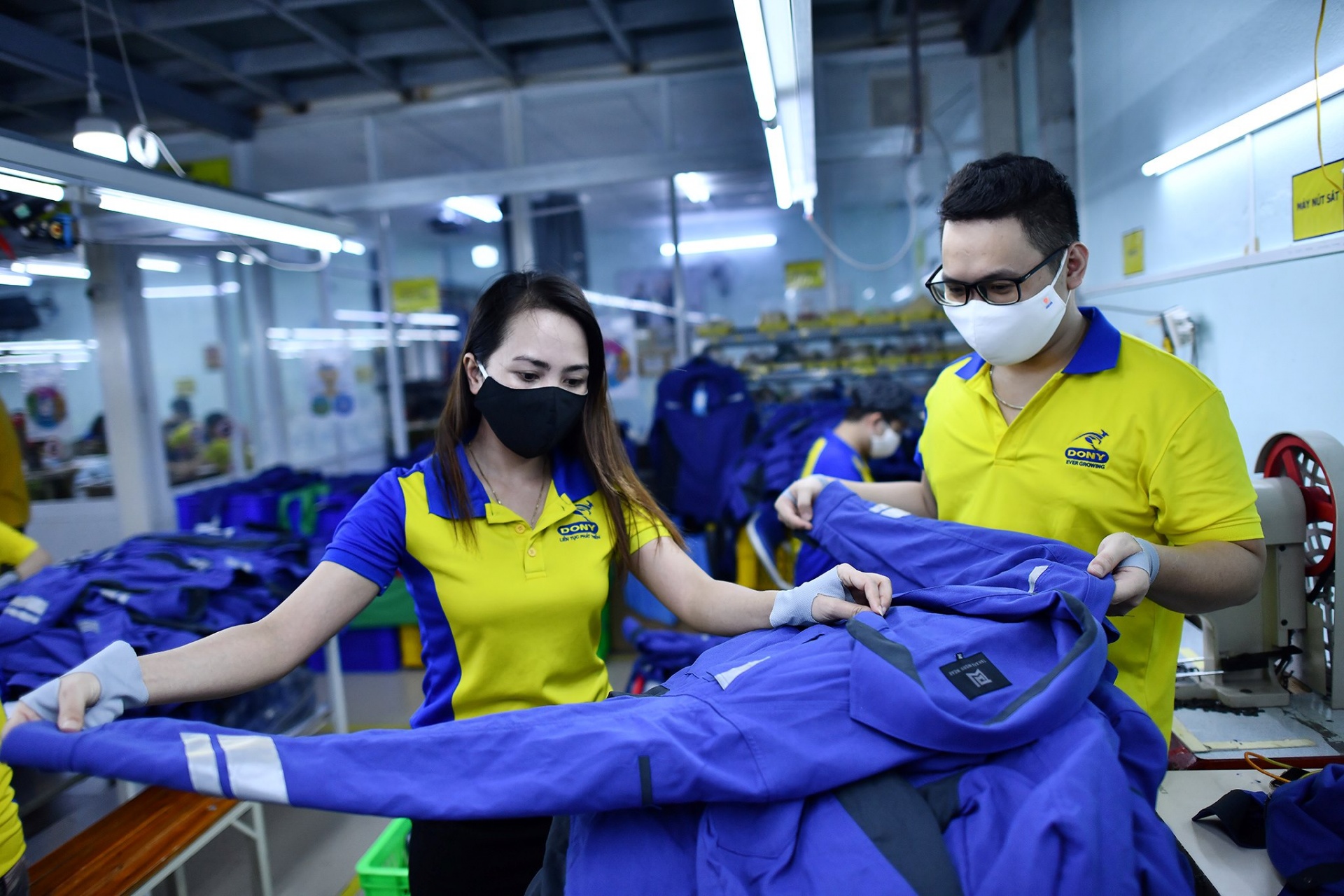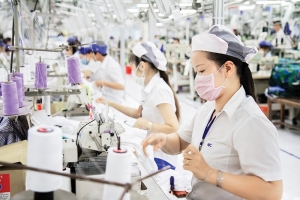Opportunities await textiles and apparel sector
Nguyen Xuan Duong, chairman of Hung Yen Garment Corporation (Hugaco), said that customers have placed orders through the end of January 2025.
 |
| Photo: baodautu.vn |
Many, however, are still observing market signals, particularly US policies on textile import tariffs following the recent election of Donald Trump as US President.
“To boost orders in the upcoming period, Hugaco and other textile apparel firms need to develop strategies to penetrate new markets such as the Middle East or South America. At the same time, investing in automated machinery, enhancing digital transformation, moving towards greener production, and cutting costs are essential to improving product quality and competitiveness,” said Duong.
Many firms report having secured orders through the first quarter (Q1) of 2025 and even into Q2, with ongoing negotiations for contracts covering the entire year.
As Vietnam’s major textile apparel export markets show signs of recovery, Le Tien Truong, chairman of state conglomerate Vietnam National Textile and Garment Group (Vinatex), noted that rising consumer demand and political instability in competing nations such as Bangladesh and Myanmar are benefiting domestic businesses.
Many companies have orders through the second quarter, with some extending into the third quarter of 2025.
“Garment orders are expected to gain traction as US consumer demand improves during the holiday shopping season. However, significant improvements in demand and unit rates are likely to materialise only from 2025 under an optimistic scenario. With these favourable factors, Vietnam’s textile apparel sector eyes tremendous market opportunities, affirming its position as a bright spot on the global apparel map,” Truong said earlier this month.
In planning for 2025, Vinatex has provided guidelines for its member units, focusing on input factors such as labour and wages, exchange rates, interest rates, shifting orders, and factors affecting Vietnam's textile apparel exports.
To date, Vietnamese textile apparel products have made inroads in more than 100 markets, with a diversified customer base and product range.
Challenges like natural disasters, political instability, and policy inconsistencies in competing countries continue to present opportunities for Vietnam to capture shifting orders.
Seasonal factors, year-end festivals, and promotion policies by major brands are expected to drive a bustling shopping season. Additionally, the continued decline in ocean freight costs will help mitigate expenses for firms.
In 2024, Vietnam’s textile apparel export value showed a strong recovery, estimated at $44 billion, up 11.2 per cent compared to 2023, driven by significant order shifts from China, Bangladesh, and Myanmar to Vietnam.
Additionally, inventory levels in major markets such as the US, EU, and Japan are gradually decreasing compared to the previous year, alongside an upward trend in purchasing power. These factors, coupled with optimistic forecasts, have led the industry to set an export target of $47-48 billion for 2025.
However, despite expanding export markets, the sector still faces significant challenges within the global development strategies. These challenges require firms to focus on technology investments to adapt and capitalise on emerging opportunities.
According to Vu Duc Giang, chairman of the Vietnam Textile and Apparel Association, while achieving impressive results in 2024, the domestic textile industry faces intense competition in exporting to Comprehensive and Progressive Agreement for Trans-Pacific Partnership markets.
It also grapples with challenges in global strategies, including stricter standards from buyers in the EU and US markets, as well as the growing trends of sustainability and digitalisation.
"However, there are many opportunities for the sector to achieve the export value target of $47-48 billion in 2025, driven by the shift of orders to Vietnam amid stagnant global consumption. Notably, the Vietnamese government's strategic vision for the textile apparel industry, with a determination to elevate Vietnam’s textile apparel image on the global stage, is the key driver for the sector’s development between 2025 and 2030," said Giang at a media brief on November 19 in Hanoi.
 | Vietnam’s textile sector brings in $37 billion in FDI Over $37 billion in foreign direct investment (FDI) has flowed into Vietnam’s textile and garment sector, according to the Vietnam Textile and Apparel Association (VITAS). |
 | Quality Vietnamese apparel still favoured abroad Vietnam’s biggest apparel association has denied that the garment and textile industry is losing its competitive advantage in the United States. |
 | Apparel sector players being proactive to surmount hard times Despite being bottomed-out, textile and garment firms remain prudent in business performance for the rest of this year to weather stormy times. |
What the stars mean:
★ Poor ★ ★ Promising ★★★ Good ★★★★ Very good ★★★★★ Exceptional
Related Contents
Latest News
More News
- Businesses ramp up production as year-end orders surge (December 30, 2025 | 10:05)
- Vietjet chairwoman awarded Labour Hero title (December 29, 2025 | 13:06)
- How to unlock ESG value through green innovation (December 29, 2025 | 10:03)
- AI reshapes media and advertising industry (December 29, 2025 | 08:33)
- FPT and GELEX sign deal to develop blockchain tech for global markets (December 29, 2025 | 08:29)
- Vietnam’s GDP forecast to grow by 9 per cent in 2026 (December 29, 2025 | 08:29)
- Women entrepreneurs are key to Vietnam’s economic growth (December 29, 2025 | 08:00)
- Vietnam's top 500 value-creating enterprises announced (December 27, 2025 | 08:00)
- The PAN Group shaping a better future with ESG strategy (December 26, 2025 | 09:00)
- Masan Consumer officially lists on HSX, marking the next phase of value creation (December 25, 2025 | 13:20)

 Tag:
Tag:


























 Mobile Version
Mobile Version